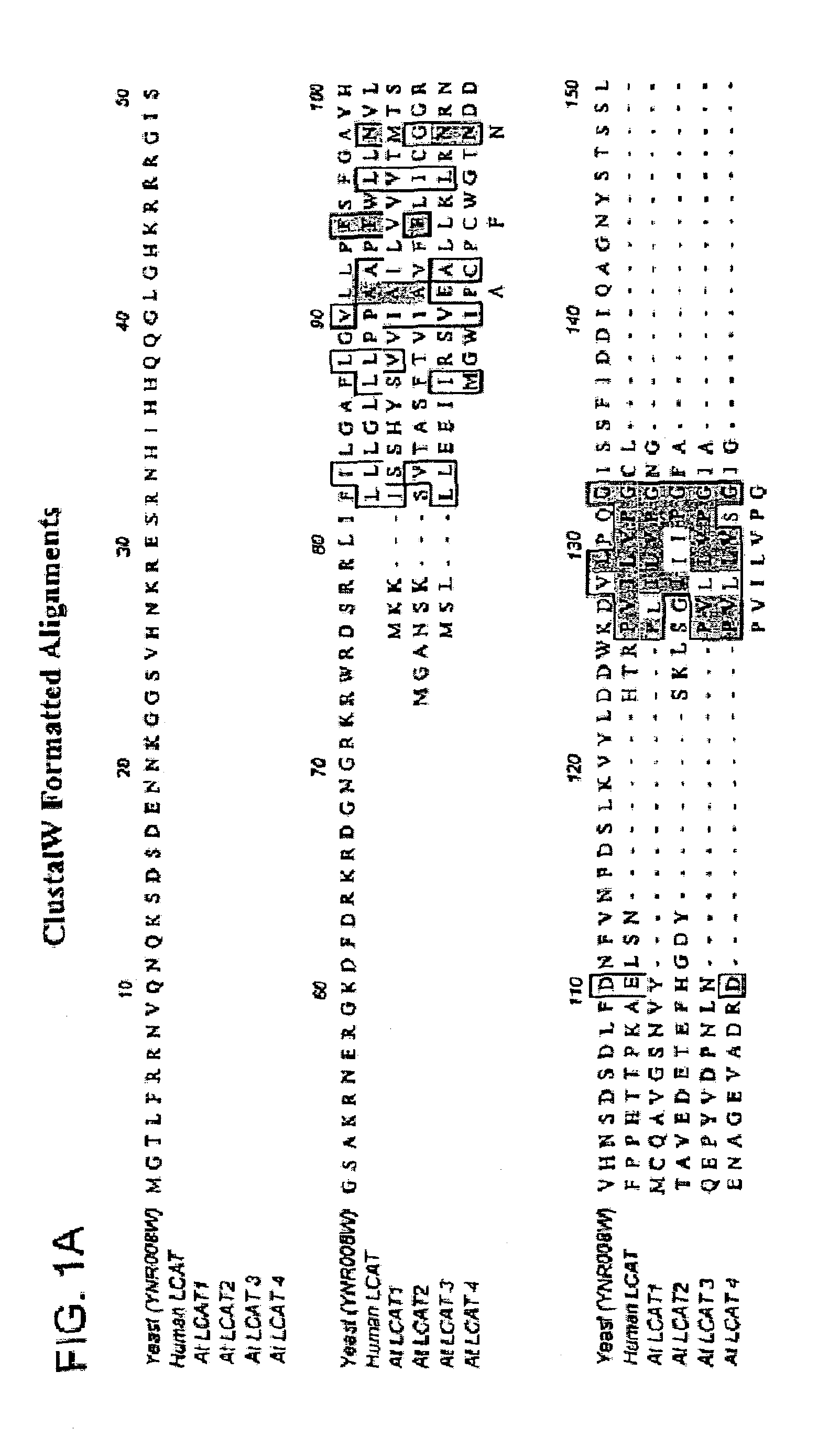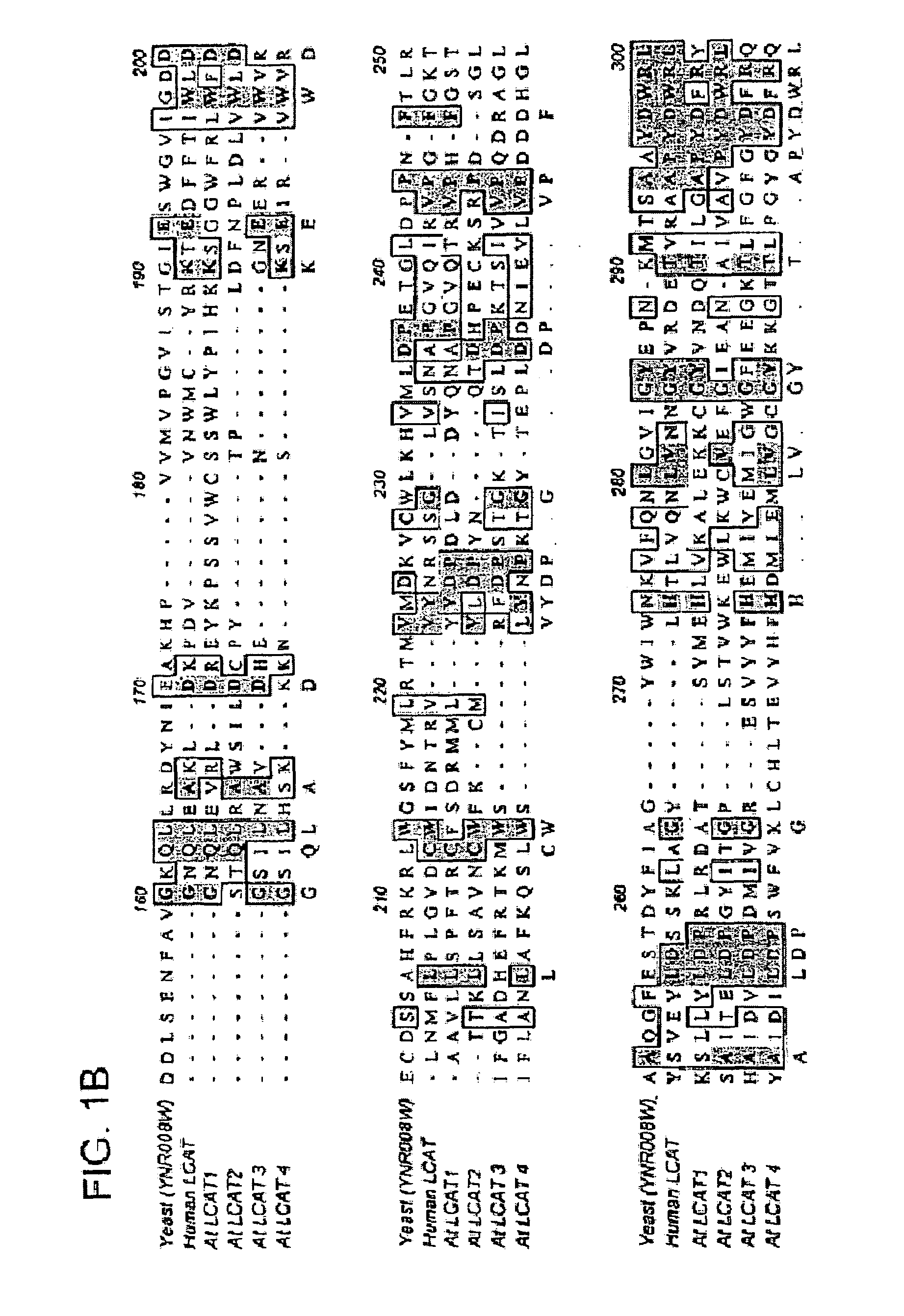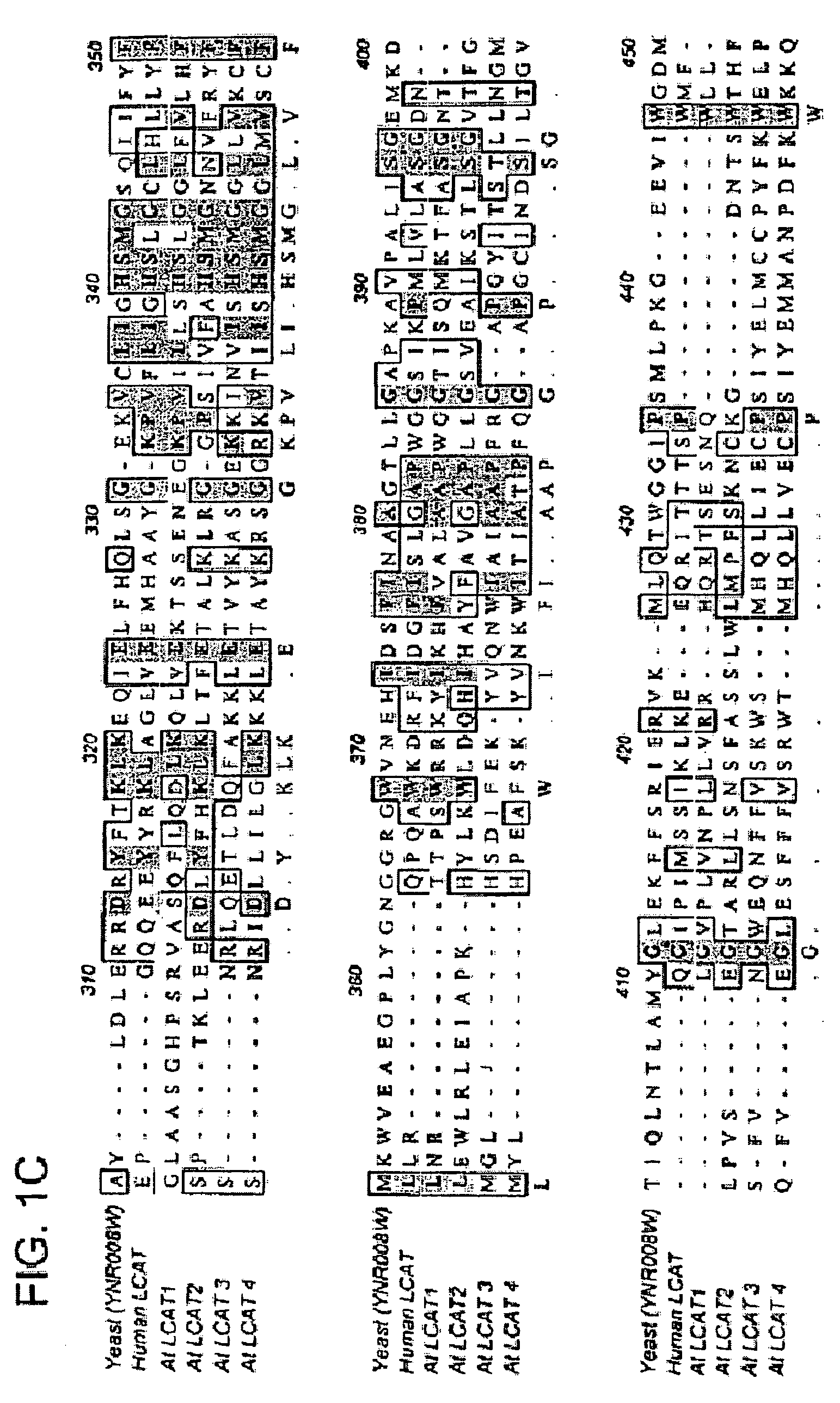Plant sterol acyltransferases
a technology of acyltransferases and plants, which is applied in the field of plant sterol acyltransferaselike nucleic acid and amino acid sequences and constructs, can solve the problems of limited number of useful nucleotide sequences for the engineering of such characteristics
- Summary
- Abstract
- Description
- Claims
- Application Information
AI Technical Summary
Problems solved by technology
Method used
Image
Examples
example 1
RNA Isolations
[0145]Total RNA from the inflorescence and developing seeds of Arabidopsis thaliana was isolated for use in construction of complementary (cDNA) libraries. The procedure was an adaptation of the DNA isolation protocol of Webb and Knapp (D. M. Webb and S. J. Knapp, (1990) Plant Molec. Reporter, 8, 180–185). The following description assumes the use of Ig fresh weight of tissue. Frozen seed tissue was powdered by grinding under liquid nitrogen. The powder was added to 10 ml REC buffer (50 mM Tris-HCl, pH 9, 0.8M NaCl, 10 mM EDTA, 0.5% w / v CTAB (cetyltrimethyl-ammonium bromide)) along with 0.2 g insoluble polyvinylpolypyrrolidone, and ground at room temperature. The homogenate was centrifuged for 5 minutes at 12,000×g to pellet insoluble material. The resulting supernatant fraction was extracted with chloroform, and the top phase was recovered.
[0146]The RNA was then precipitated by addition of 1 volume RecP (50 mM Tris-HCL pH9, 10 mM EDTA and 0.5% (w / v) CTAB) and collecte...
example 2
Identification of LCAT Sequences
[0148]Searches were performed on a Silicon Graphics Unix computer using additional Bioaccellerator hardware and GenWeb software supplied by Compugen Ltd. This software and hardware enabled the use of the Smith-Waterman algorithm in searching DNA and protein databases using profiles as queries. The program used to query protein databases was profilesearch. This is a search where the query is not a single sequence but a profile based on a multiple alignment of amino acid or nucleic acid sequences. The profile was used to query a sequence data set, i.e., a sequence database. The profile contained all the pertinent information for scoring each position in a sequence, in effect replacing the “scoring matrix” used for the standard query searches. The program used to query nucleotide databases with a protein profile was tprofilesearch. Tprofilesearch searches nucleic acid databases using an amino acid profile query. As the search is running, sequences in the...
example 3
Identification of ACAT Sequences
[0161]Since plant ACATs are unknown in the art, searches were performed to identify known and related ACAT sequences from mammalian sources from public databases. These sequences were then used to search public and proprietary EST databases to identify plant ACAT-like sequences.
[0162]A public database containing mouse Expressed Sequence Tag (EST) sequences (dBEST) was searched for ACAT-like sequences. The search identified two sequences (SEQ ID 30 and 31) which were related (approximately 20% identical), but divergent, to known ACAT sequences.
[0163]In order to identify ACAT-like sequences from other organisms, the two mouse ACAT sequences were used to search public and proprietary databases containing EST sequences from human and rat tissues. Results of the search identified several sequences from the human database and from the rat database which were closely related to the mouse sequences. The human and rat ACAT-like EST sequences were assembled, us...
PUM
| Property | Measurement | Unit |
|---|---|---|
| pH | aaaaa | aaaaa |
| pH | aaaaa | aaaaa |
| pH | aaaaa | aaaaa |
Abstract
Description
Claims
Application Information
 Login to View More
Login to View More - R&D
- Intellectual Property
- Life Sciences
- Materials
- Tech Scout
- Unparalleled Data Quality
- Higher Quality Content
- 60% Fewer Hallucinations
Browse by: Latest US Patents, China's latest patents, Technical Efficacy Thesaurus, Application Domain, Technology Topic, Popular Technical Reports.
© 2025 PatSnap. All rights reserved.Legal|Privacy policy|Modern Slavery Act Transparency Statement|Sitemap|About US| Contact US: help@patsnap.com



